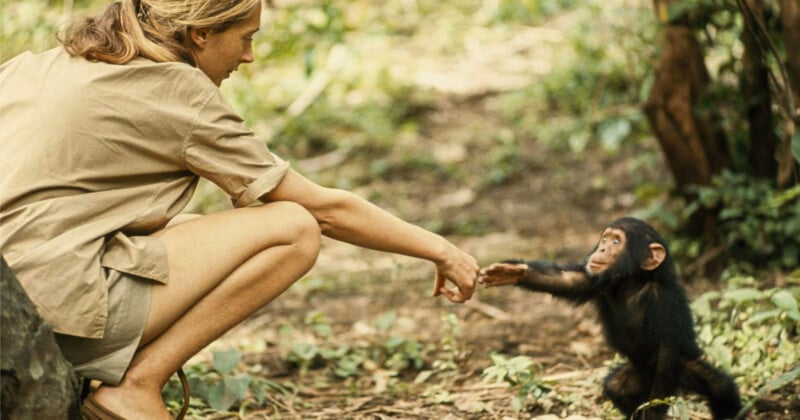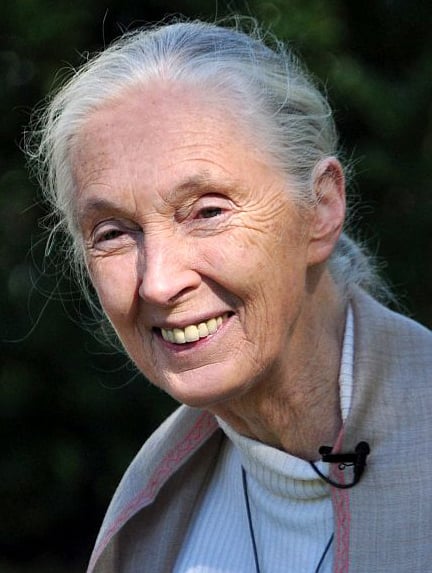Jane Goodall, Conservationist and Supporter of the Photographic Arts, Has Passed Away

Dr. Jane Goodall, renowned primatologist, anthropologist, and conservationist, passed away on October 1, 2025, at the age of 91.
Goodall’s death was confirmed by the Jane Goodall Institute, which announced that she died of natural causes while in California during a speaking tour.
A Lifelong Commitment to Conservation
Dr. Goodall’s groundbreaking research in the 1960s at Gombe Stream National Park in Tanzania transformed our understanding of chimpanzees, revealing their use of tools and complex social behaviors. This work not only revolutionized the field of ethology but also bridged the gap between humans and other species, emphasizing our shared traits and the importance of empathy in conservation efforts.
Beyond her scientific contributions, Dr. Goodall was a tireless advocate for the environment. She founded the Jane Goodall Institute in 1977, focusing on wildlife research, education, and community-centered conservation programs. Her Roots & Shoots initiative, launched in 1991, empowered young people worldwide to engage in projects that promote environmental stewardship and animal welfare.
Throughout her life, she tirelessly campaigned for the protection of endangered species and the restoration of natural habitats, inspiring generations of scientists, conservationists, and environmental advocates worldwide.
The Role of Photography in Her Work
Photography played a crucial role in Dr. Jane Goodall’s work, serving as both a scientific tool and a means of advocacy. Early in her career, images captured during her field research provided visual evidence of the complex social lives of chimpanzees, from tool use to emotional expression. These photographs allowed the broader public to see chimpanzees not as distant, abstract subjects of study, but as sentient beings with personalities, families, and social bonds.
Dr. Goodall understood that photography could translate scientific observation into a universal language. By documenting intimate moments between animals, she brought empathy and awareness to conservation causes, helping people connect emotionally with species that might otherwise have seemed remote or inaccessible. Images of Goodall, many captured by her first husband, Hugo van Lawick, were widely used in books, documentaries, and lectures, bringing her discoveries to life and amplifying her message about the urgency of protecting wildlife and habitats.

In later years, Dr. Goodall continued to champion the power of photography as a tool for environmental storytelling. Most notably PetaPixel covered that to celebrate Dr. Jane Goodall’s 90th birthday on April 3, 2024, Vital Impacts hosted a 90-day fine-art photography sale titled “The Nature of Hope: 90 Years of Jane Goodall’s Impact.” This collection exclusively featured the work of 90 female photographers from around the globe who are inspired by Dr. Jane Goodall. Much like Dr. Goodall herself, these artists are breaking ground in their fields, and many of the breathtaking images reimagine humanity’s relationship with the natural world.
The prints served not only as artistic tributes but also as active contributions to Jane’s vision for a kinder, more sustainable planet. Proceeds from the sale directly benefited the Jane Goodall Institute’s global chapters, supporting science-based, community-led conservation programs and youth empowerment initiatives. By highlighting female photographers and connecting their work to tangible conservation outcomes, the project reflected Dr. Goodall’s enduring belief in the power of visual storytelling to inspire both empathy and action.
Through this collaboration, Dr. Goodall demonstrated that photography could be both evidence and inspiration. It documented nature’s realities, captured moments of beauty and resilience, and motivated people worldwide to care for and protect the living world.
A Lasting Legacy
Dr. Jane Goodall’s passing marks the end of an era in primatology and conservation. However, her legacy endures through the countless individuals and organizations she inspired. Her work reminds us of the profound impact that one person can have on the world and the importance of continuing the fight to protect our planet and its inhabitants.
As we reflect on her life and contributions, we are reminded of the power of photography to capture the essence of our natural world and to inspire action to preserve it. Through her images and educational programming, Dr. Jane Goodall demonstrated that conservation is not only about science, but also about empathy, connection, and the visual stories that inspire people to protect what they love.
Image credits: Jane Goodall Institute, Hugo van Lawick, Nick Stepowyj